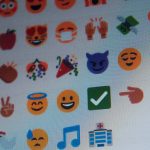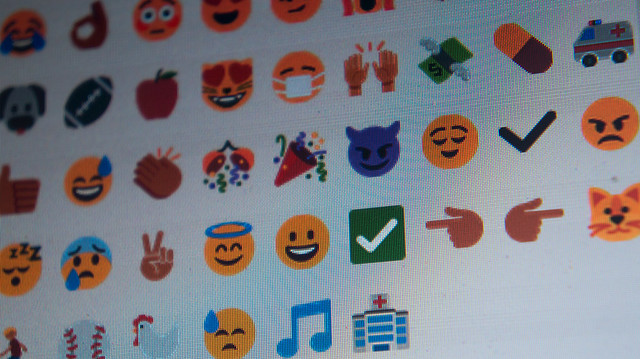
Image Credit: Theus Falcão
So can we talk about email? It’s a key part of our life and it seems like we spend a great deal of time each day using our manager skills to read emails that have been sent to us and composing emails to send to others. However, email has always had a problem. It turns out that the written word does a very poor job of conveying how the sender is feeling when they are sending it. When we talk to people we can read their body language and facial expressions – not so when we are reading their emails. It turns out that there is a way around this problem – emojis.
The Power Of Emojis
First we need to make sure that we are all on the same page when it comes to this emoji stuff. Just what exactly are emojis? Emojis are what are called “ideograms” and “smileys” and are used in both electronic messages and on web pages. Emoji come in a number of different styles that include facial expressions, common objects, places and types of weather, and animals. Emojis are very similar to emoticons, but emoji are actual pictures instead of the typographics that emoticons are. Originally meaning pictograph, the word emoji comes from Japanese words for “picture” +”character”. Originating on Japanese mobile phones in 1997, emoji became increasingly popular worldwide in the 2010s after being added to several mobile operating systems. They are now considered to be a large part of popular culture in the west.
More and more often emojis are being included in our communications in the workplace. Oh, by the way, none of us have any manager training on how to deal with this change. This is not just something that the younger workers are thrusting on their older coworkers. The use of emojis in our communications is happening because there are a deep neurological reasons why we want to both use and see them. The use of emojis can lead to better cooperation within teams. However, managers have to be careful because the use of emojis is not always appropriate and it should not be viewed as a way to replace other types of communication.
Just to show you how prevalent the use of emojis is, the group communication tool Slack reports that 26 million custom emojis have been created since they introduced the feature. Microsoft’s team communication tool, Teams, reports that emoji use is basically universal. This form of visual communication first took root in our casual communications and has now started to move into our business communications. It turns out that in our brains, how we process emojis is performed in the same area where we process faces. The reason for this is that emojis often include the most salient features that we use for visually conveying human emotion – our eyes, our mouths, and even sometimes our eyebrows.
How Emojis Can Make Your Email Better
What managers need to understand is that when we receive an email, we can’t see the sender’s face. However, when they include an emoji in their email your brain will generate a similar response as when you see their face. When you use emojis you can create “reacjis” responses. These types of responses attach specifically to a message rather than following in the thread below. This way emojis can be used to make written communication less verbose and can help with team building.
What managers need to understand is that people tend to use emojis to make their messaging more efficient by conveying both the intent and the context that would otherwise be missing from their emails. What researchers have found is that people tend to share positive emotions, things like a smile or laughter. The reason that we do this is because people have evolved to convey prosocial emotions that tell others that we are not a threat to them. The proper use of emojis has been shown to form relationships and to better understand each other.
What managers need to understand is that both companies and teams tend to have their own cultures of emoji use. Teams tend to create an almost custom emoji pictographic language. Managers need to understand that emojis can’t just be used randomly. If you don’t understand how a team uses emojis, then using them can damage your ability to communicate with members of that team. Managers need to take the time to understand when to strategically deploy an emoji to either smooth communications or add context.
What All Of This Means For You
Guess what – email is changing! Yes, that tool that we use each and every day is now being taken over by a new way of communicating – graphical emojis. Managers need to take the time to understand what this change means and then they need to develop the skills that will be required to use emojis to improve how they communicate.
Emojis are used in both electronic messages and on web pages. There are deep neurological reasons why we want to both use and see emojis. However, managers need to be aware that there is a time and a place for emojis to be used. In our brains, how we process emojis is performed in the same area where we process faces. Using am emoji in an email allows the receiver to effectively “see” the sender’s face. People use emojis to convey positive emotions in order to show receivers that they pose no threat to them. Managers have to be careful and understand how teams use emojis so that they don’t negatively impact their ability to communicate with a team.
Emojis are here to stay. They have clearly shown their power to help us do a better job of communicating with our teams and the other people that we need to stay in touch with. However, like any other tool, we need to be careful and not overuse them or use them in inappropriate situations. Managers will need to take the time in order to become comfortable with emojis and understand how they can use them to become better communicators.
– Dr. Jim Anderson
Blue Elephant Consulting –
Your Source For Real World IT Management Skills™
Question For You: Do you think that there is a limit to the number of emojis that can be used in a single email?
P.S.: Free subscriptions to The Accidental IT Leader Newsletter are now available. Learn what you need to know to do the job. Subscribe now: Click Here!
What We’ll Be Talking About Next Time
As the world has changed and we are all working remotely, video conferencing has arrived as a way for everyone to stay in contact. In the beginning it was an amusing novelty and gave us a chance to see where everyone lives. However, the initial novelty has now worn off. Just about everyone has become tired of video conferencing and sorta wishes that it would go away. As a manager, you need your team to stay connected and video conferencing is an important tool. What can you do to use your manager skills to prevent video conferencing burn out?

